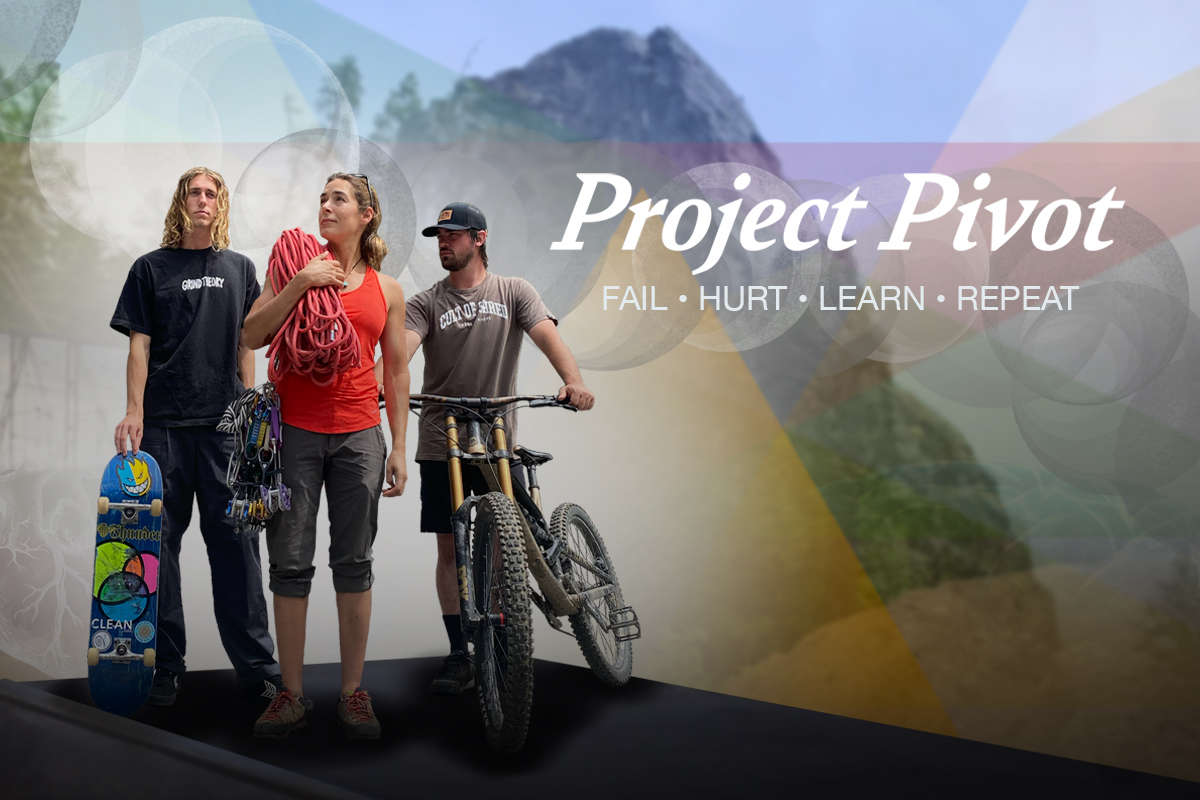Tamron to the Extreme
With Tamron lenses on his cameras and three elite athletes as his stars, Charley Voorhis creates Project Pivot, his first feature-length documentary.
Share the article:
More Photo Tips | Video Gallery | Photo Gallery | Enewsletter sign-up
By Jenn Gidman
Images and video by Charley Voorhis
In the world of extreme sports, where adrenaline and passion collide, filmmaker tips from Charley Voorhis has ventured into uncharted territory with Project Pivot, his first feature-length documentary. Inspired by his own experiences in skateboarding and snowboarding, Charley recruited a trio of elite athletes for a three-day adventure in Washington state’s Wenatchee Valley, where they effectively tried their hand at each other’s sport.
The stars of Charley’s self-financed labor of love: skateboarder Sean Davis, rock climber Jessica Campbell, and mountain biker Mitchell Bryan. “I brought all three of them together from various parts of the country, but I kept them in the dark about a lot of things about the movie, so that filming would really be kept as raw and real as possible,” Charley says. “I wanted to create a fly-on-the-wall experience for the viewer without intervening with the action. Each day of filming we concentrated on one particular sport, with the expert in that sport leading the way.”

Click image for video link
Central to Charley’s creative vision were the Tamron lenses that served as his visual toolkit throughout the filmmaking tips process. “My rig relied mostly on the Tamron SP 24-70mm F/2.8 Di VC USD G2 zoom lens, which I use for about 80% of my video work on my Canon 1D X Mark III and Canon 1D C cameras,” he says. “The 24-70mm G2 was terrific for the wider-angle establishing shots that showed off the location, as well as for interviews. I used two cameras for interviews, and on the other camera was either the SP 70-200mm F/2.8 Di VC USD G2 telephoto and SP 150-600mm Di VC USD G2 ultra-telephoto, for when I needed more reach, or my older 15-30mm wide-angle lens. I also had a third guy using his Sony mirrorless camera with the Tamron 28-75mm F/2.8 Di III VXD G2 zoom and 150-500mm Di III VC VXD ultra-telephoto lens.”
Here, some advice Charley gleaned from his hard-earned experience making his first full-length documentary.
CHARLEY VOORHIS' QUICK FILMMAKING TIPS
Don’t overplan, and be prepared to (as the film’s name suggests) pivot.
That’s what really saved us and kept production moving forward, because we faced many different challenges. Staying nimble and adaptable, as well as safe, was key, especially because we had such a tight time frame we were working with.
For example, at the end of our skateboarding day, we were surprised by a dramatic weather change. And on mountain bike day, we got to the top of the mountain for the shoot, which was set to involve various cable cams and gimbals, and discovered we’d left an entire case of equipment behind. We had to make some last-minute changes and very quickly come up with a Plan B, all without letting our cast members know what was happening. We didn’t want them thrown off their game by technical difficulties.

Click image for video link

Click image for video link
Mitigate risk.
The possibility of injury while filmmaking something like this is always on the top of my mind. The entire production hinged on everyone staying healthy, safe, and uninjured. So we had to dance that delicate dance where we took necessary safety precautions but still included just enough risk to tell a compelling story. You should never go so far, however, that there’s any risk of anyone being seriously injured or killed.

Click image for video link
Don’t overdirect.
This is especially important when making a documentary. Trust the scene, trust your subjects, and trust the story arc, and then let it all fall into place. It was particularly hard for me to let go of some things, because I’m so used to wielding complete control over my projects and being a perfectionist in what I do.

Click image for video link
There was so much captured content to go through after filming due to this approach. I personally edited the film, spending about 1,200 to 1,300 hours working on that content over the next year. But the beautiful thing about that is we ended up with a movie where nothing was staged or rehearsed—it was simply humans going through this experience of learning what drives each other, and what scares each other, in the most raw way possible.
For more of Charley’s filmmaking tips and techniques, check out his “Cinematic Stories” series in the Spring 2023 and Fall 2023 editions of Tamron Magazine.
Project Pivot is currently streaming on Amazon Prime, Google Play, and Apple TV. To see more of Charley Voorhis’ work, check out his website and Instagram.
Is your Tamron News subscription up to date? Click to subscribe to all editions of Tamron News featuring how-to tips, new product news, contest announcements and inspiration!
More Photo Tips | Watch Videos | Learn More About Tamron Lenses | Photo Gallery
